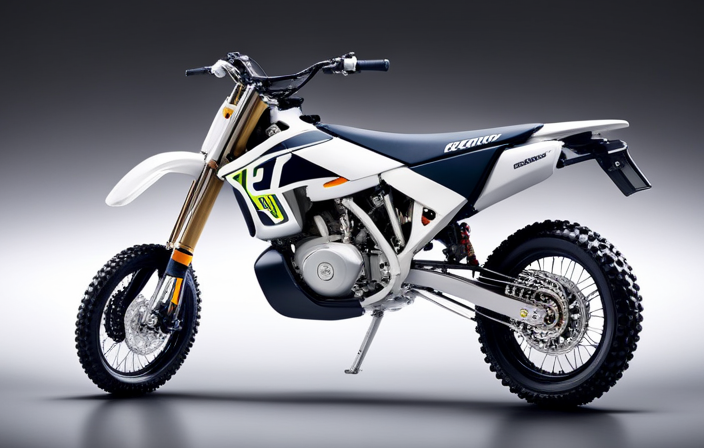Riding an electric bike is like gliding effortlessly through the wind, with the power of a battery propelling you forward. But just like any other rechargeable device, the question arises: how long does an electric bike battery charge last?
In this article, I will delve into the technical aspects of electric bike batteries and explore the factors that affect their lifespan. From understanding battery capacity and range to maximizing longevity through proper charging and maintenance, we will uncover the secrets to getting the most out of your electric bike battery.
Key Takeaways
- The lifespan of an electric bike battery can vary depending on the type and technology used, with lithium-ion batteries lasting around 2-3 years or 500-1000 charge cycles, and lead-acid batteries lasting around 1-2 years or 300-500 charge cycles.
- Lithium-ion batteries have shorter charging times, typically taking around 4-6 hours to fully charge, while lead-acid batteries usually take around 6-8 hours.
- Proper storage techniques, such as keeping the battery in a cool, dry place and charging it to around 50% capacity before storing, can help extend battery life.
- Regular maintenance, including checking for signs of deterioration and avoiding overcharging and undercharging, is important for maximizing the lifespan of an electric bike battery.
Understanding Electric Bike Batteries
You’ll want to understand how long an electric bike battery charge lasts. On average, an electric bike battery charge can last anywhere from 20 to 50 miles, depending on various factors such as terrain, rider weight, and assistance level.
Electric bike battery maintenance is essential for maximizing the lifespan and performance of your battery. To ensure your battery lasts as long as possible, it is crucial to follow proper charging and storage practices. Avoid overcharging or leaving the battery completely discharged for extended periods.
Regularly check for any signs of wear or damage and troubleshoot common battery issues such as reduced capacity or sudden power loss. By taking care of your electric bike battery and addressing any maintenance concerns promptly, you can enjoy longer rides and extended battery life.
Factors Affecting Battery Lifespan
One factor that affects the lifespan of an e-bike battery is how frequently it is used. The more often the battery is charged and discharged, the quicker its overall lifespan will be.
In addition to usage frequency, other factors can also impact the battery’s lifespan. These include:
-
Temperature: Extremes in temperature, both hot and cold, can negatively affect the battery’s performance and lifespan.
-
Charging habits: Using the correct charger and following the manufacturer’s guidelines for charging can help prolong the battery’s lifespan.
-
Depth of discharge: Fully discharging the battery on a regular basis can decrease its lifespan, so it’s important to avoid completely draining the battery whenever possible.
Considering these factors along with battery charging time is essential to maximize the lifespan of an e-bike battery.
Battery Capacity and Range
To maximize your e-bike’s range, it’s important to consider the battery capacity. The battery capacity refers to the amount of energy the battery can store, usually measured in watt-hours (Wh). A higher capacity battery will typically provide a longer range before needing to be recharged.
However, it’s important to note that battery life and battery efficiency also play a significant role in determining the actual range you can achieve. Battery life refers to the overall lifespan of the battery, including the number of charge cycles it can endure before its capacity starts to degrade.
Battery efficiency, on the other hand, refers to how effectively the battery converts stored energy into power for the e-bike. Higher battery efficiency means less energy is wasted during the conversion process, resulting in a longer range.
Therefore, when choosing an e-bike, consider both the battery capacity and the battery’s overall life and efficiency to ensure you get the maximum range from your e-bike’s battery charge.
Tips to Maximize Battery Longevity
If you want your e-bike’s battery to last as long as possible, it’s important to follow these tips to maximize its longevity.
Proper battery care and charging techniques are essential for maintaining the health and performance of your electric bike’s battery.
Firstly, avoid fully discharging the battery, as deep discharges can reduce its lifespan. It is recommended to recharge the battery after every ride, even if it’s not fully depleted.
When charging, use the charger provided by the manufacturer and avoid using third-party chargers, as they may not be compatible or have the correct voltage.
Additionally, it’s best to charge the battery at room temperature, as extreme temperatures can negatively impact its performance. Avoid exposing the battery to excessive heat or cold.
Lastly, it’s advisable to store the battery in a cool and dry place when not in use.
By following these battery care and charging techniques, you can significantly extend the lifespan of your electric bike’s battery.
Charging and Maintenance Best Practices
Remember to follow these charging and maintenance best practices to ensure the optimal performance and longevity of your e-bike’s battery.
First and foremost, it is essential to adhere to a regular maintenance schedule. This includes inspecting the battery for any physical damage or signs of wear and tear.
Additionally, it is crucial to keep the battery clean and dry, avoiding exposure to extreme temperatures and moisture.
When charging your e-bike battery, always use the charger provided by the manufacturer and avoid overcharging or undercharging.
It is also advisable to charge the battery in a well-ventilated area and never leave it unattended while charging.
In case you encounter any common battery issues such as decreased range or sudden power loss, refer to the troubleshooting guide provided by the manufacturer.
By following these best practices, you can ensure that your e-bike battery lasts longer and performs optimally.
Impact of Terrain and Riding Style
Consider the impact of different terrains and your riding style on how your e-bike performs. When it comes to elevation, riding uphill can significantly drain your battery faster compared to riding on flat ground. The motor has to work harder to overcome gravity, thus consuming more power. On the other hand, riding downhill can actually help recharge your battery through regenerative braking, where the motor acts as a generator to convert the bike’s momentum into electricity. Additionally, your riding style greatly affects battery usage. Utilizing pedal assist modes that provide varying levels of motor assistance can have a significant impact on how long your battery charge lasts. Higher levels of pedal assist will drain the battery faster, while lower levels will conserve energy. It’s important to find a balance between using pedal assist and relying on your own pedaling power to optimize your battery performance.
| Terrain | Elevation Impact | Battery Drain |
|---|---|---|
| Uphill | Drains battery faster | High |
| Downhill | Regenerative braking | Low |
| Flat ground | Minimal elevation impact | Moderate |
Weather Conditions and Battery Performance
When considering the impact of weather conditions on electric bike battery performance, there are a few important factors to consider. Extreme temperatures and humidity levels can have a significant effect on the battery’s performance.
In extreme cold temperatures, the battery’s capacity can be significantly reduced, resulting in a shorter charge lasting time. This means that you may not be able to travel as far on a single charge.
On the other hand, extreme heat can also negatively affect the battery’s performance. It can cause the battery to degrade faster over time, reducing its overall lifespan. This means that you may need to replace the battery sooner than expected.
High humidity levels can also be problematic for electric bike batteries. They can lead to moisture buildup inside the battery, potentially causing corrosion. This can further reduce the battery’s lifespan and performance.
It is important to note that lithium-ion batteries, which are commonly used in electric bike batteries, are sensitive to these conditions. Therefore, it is recommended to store the battery in a cool and dry place when not in use. You should also avoid exposing it to extreme temperatures or prolonged exposure to high humidity levels.
By taking these precautions, you can help ensure that your electric bike battery performs optimally and lasts as long as possible.
Battery Types and Technologies
The different types and technologies of batteries used in electric bikes vary in their performance and lifespan.
When it comes to battery charging time, there are a few factors to consider.
Lithium-ion batteries, which are commonly used in electric bikes, have a relatively short charging time compared to other types of batteries. They can be fully charged in around 4-6 hours, depending on the specific battery and charger.
On the other hand, lead-acid batteries, which are less common in electric bikes these days, take longer to charge, usually around 6-8 hours.
When it comes to battery lifespan, lithium-ion batteries again take the lead. They typically last around 2-3 years or 500-1000 charge cycles, whereas lead-acid batteries have a shorter lifespan of around 1-2 years or 300-500 charge cycles.
So, if you’re looking for a battery with faster charging time and longer lifespan, lithium-ion batteries are the way to go.
Extending Battery Life through Proper Storage
To extend the life of your battery, be sure to store it properly. Follow these proper charging techniques and signs of a deteriorating battery:
-
Avoid extreme temperatures: Store your electric bike battery in a cool, dry place to prevent overheating or freezing, which can damage the cells.
-
Keep it at the right charge level: Before storing, charge the battery to around 50% capacity. This ensures that it won’t be fully discharged or overcharged during storage, both of which can harm the battery.
-
Disconnect from the bike: Remove the battery from your electric bike before storing it. This prevents any parasitic drain from the bike’s electrical system, which can slowly discharge the battery over time.
-
Regularly check for signs of deterioration: Monitor your battery for any bulging, leaking, or significant reduction in capacity. These are indications that the battery is deteriorating and may need replacement.
By following these storage guidelines and being aware of signs of a deteriorating battery, you can maximize the lifespan of your electric bike battery.
Frequently Asked Questions about Electric Bike Batteries
One common question people have is how often they should charge their e-bike battery. Proper electric bike battery maintenance is crucial to ensure optimal performance and longevity.
Contrary to common misconceptions, it is not necessary to fully discharge the battery before recharging it. In fact, it is recommended to recharge the battery after each ride, regardless of the remaining charge. This practice helps to prevent deep discharges, which can negatively impact battery life.
Additionally, it is important to store the e-bike battery in a cool, dry place, away from extreme temperatures and humidity. Avoiding overcharging and undercharging, as well as regularly checking the battery’s voltage and capacity, will help to maximize its lifespan.
Remember, following these guidelines will ensure that your electric bike battery lasts as long as possible.
Frequently Asked Questions
Can I charge my electric bike battery with a regular power outlet?
Yes, you can charge your electric bike battery with a regular power outlet. It provides convenient charging options and reduces charging time. However, it’s important to use the proper charger and follow the manufacturer’s guidelines for safe and efficient charging.
What is the average lifespan of an electric bike battery?
The average lifespan of an electric bike battery depends on several factors, including usage patterns, charging habits, and overall battery quality. It can range from 2 to 5 years, but proper care and maintenance can help extend its longevity.
How long does it take to fully charge an electric bike battery?
To fully charge an electric bike battery, it typically takes around 4-6 hours. However, to maximize the battery’s lifespan, it is important to follow certain guidelines, such as avoiding extreme temperatures which can affect charging time.
Can I ride my electric bike in the rain without damaging the battery?
I can ride my electric bike in wet conditions, but it’s important to protect the battery from rain damage. To do so, I can use a waterproof cover, apply silicone sealant to connections, and avoid submerging the battery.
Is it possible to upgrade the battery capacity of my electric bike?
Yes, it is possible to upgrade the battery capacity of an electric bike, which can extend the battery life. By replacing the existing battery with a higher capacity one, you can enjoy longer rides without worrying about running out of power.
Conclusion
In conclusion, understanding the lifespan of an electric bike battery is crucial for maximizing its longevity. By considering factors such as battery capacity, range, and the impact of weather conditions, riders can make informed decisions about charging and maintenance.
Choosing the right battery type and technology, as well as practicing proper storage techniques, can also help extend the life of the battery. By following these tips, riders can ensure that their electric bike battery charges last longer and provide optimal performance for their journeys.
















